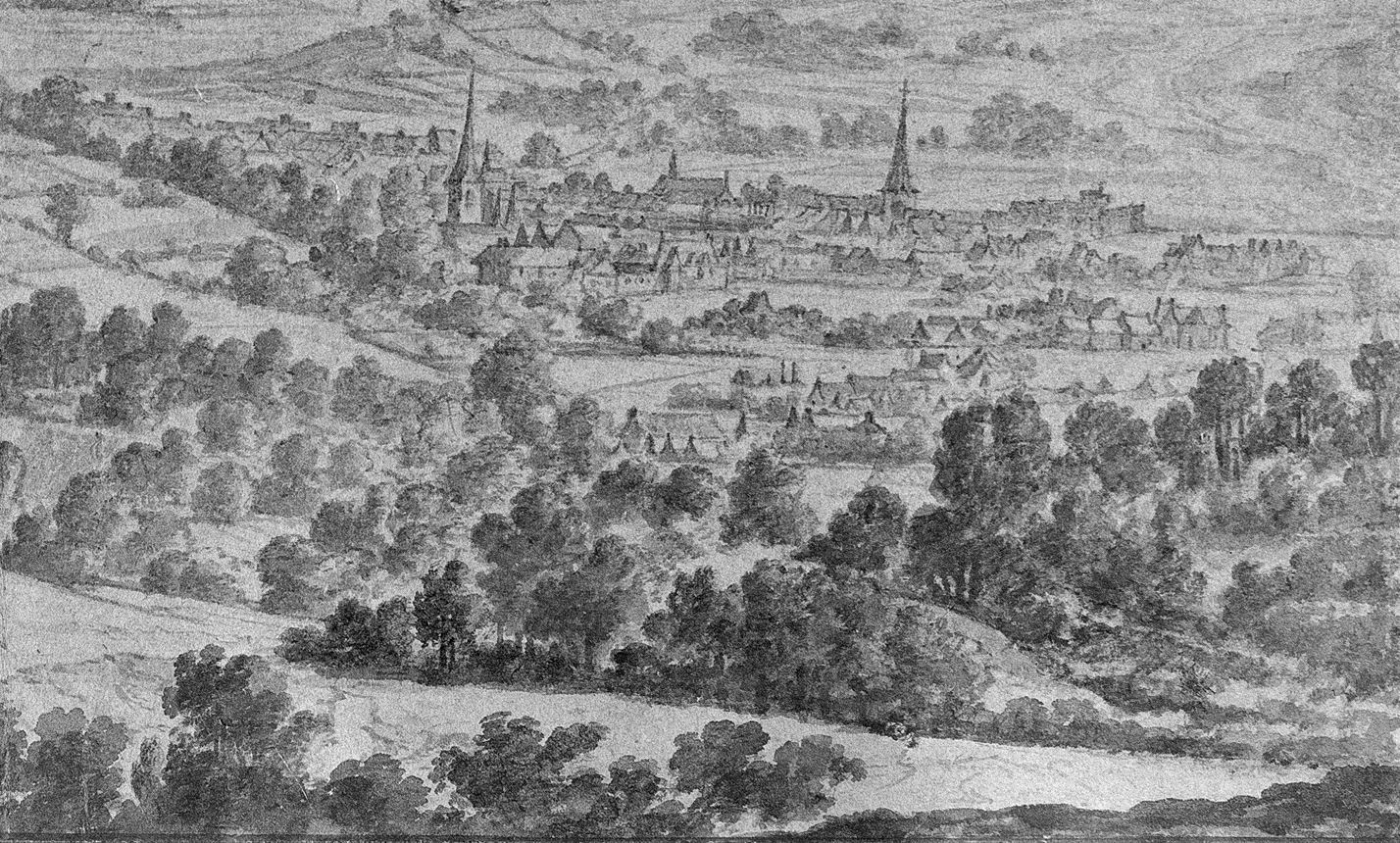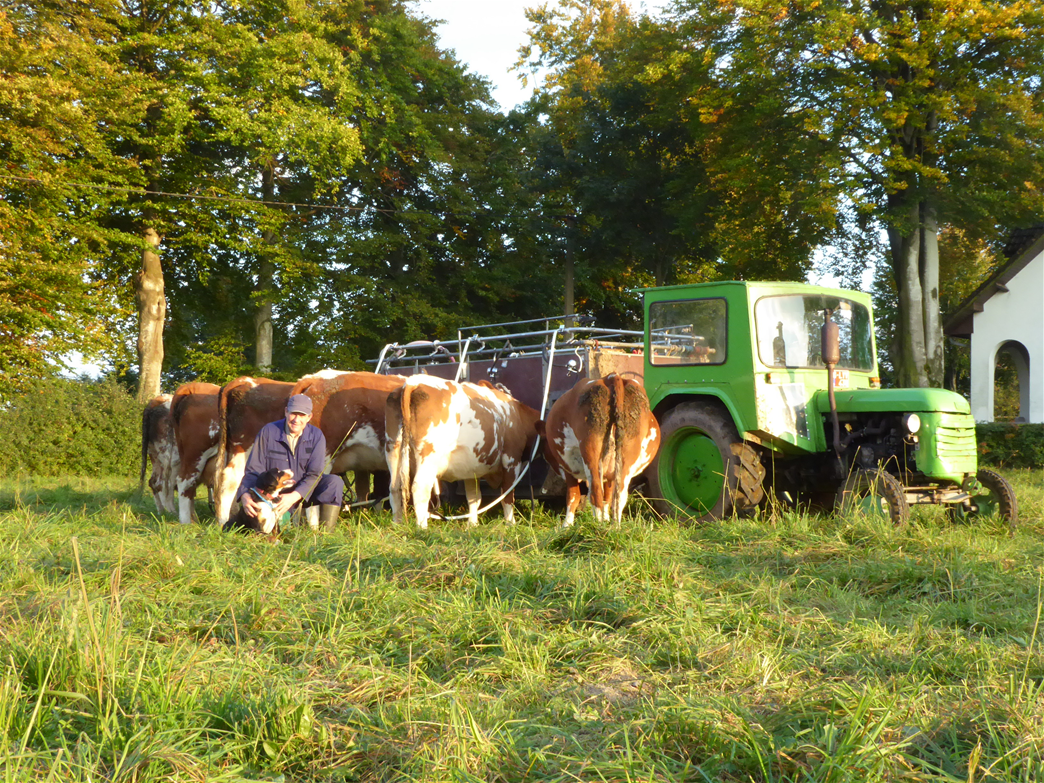Our picture is up to date and the story is quickly told. On this Tuesday in September, it is supposed to be time to finish work. Not for the part-time farmer, though. After returning home, he still has to milk his cows on the pasture near his house. There are eight of them here. The number can vary until the cows are put indoors in November. The animals know him and listen to him. They are not disturbed by the dog, which has been trained to shoo the animals to the milking cart. Each cow has its own place on the cart, with a little sign with its name on it. The sun, already low in the sky, adds an idyllic touch to the scene.
Today, he is one of only four farmers in the village, and the last one left to practice small-scale dairy farming. Of course, his small farm is all about yield. At the end of the 1980s, there was no longer any business in butter and milk powder. The Büllingen-Sankt Vith dairy cooperative, the original delivery address for most dairy farmers in the Belgian Eifel, was on the verge of merging with the Hocheifel milk cooperative and abandoning production in Büllingen in favour of St. Vith. These were turbulent times, when the only way to stop the fall in milk prices was to increase the size of farms and improve the quality of production and processing.
Since then, this farm, like all others, has lived in a constant state of flux between fiercely promoted dairies, prescribed standards and technical progress. The purchases of 1970 that are still etched in the memory of the family are a Bautz, the first milking tractor and the milking machine. Looking back, but also looking forward, the question of profitability has remained a pressing one.
It is now clear that this farm will also be abandoned in the foreseeable future. This closure will thus join the (supra)regional development in this sector that began in the 1960s, which no longer surprises anyone. Since then, many farms have closed, due to an alternative source of income from a main occupation, due to a lack of successor, due to fragmenting regulations, or owed to the fact that it is too much of a burden being tied down all year round.
In spite of all this, it was not all bad. This photograph proves it. It could also tell of a love of nature and animals. One day, however, it will document the – perhaps – last representative of a farming community in the village, who, morning and evening, would rush out to his cows with his tractor, his milking harness and his dog, to milk them alone in the open countryside.
The presentation by the Arbeitskreis Eifeler Museen (AEM) ‘Dünnbeinig mit krummem Horn’ (Thin-legged with a crooked horn) was very well received in January 1989. Dr Burchard Sielmann, the coordinator of the exhibition, saw in it a piece of reality according to which ‘people only really become aware of something happening around them when it is no longer there’. How right he is.
Carlo Lejeune
(1) Einblick in die Geschichte der Eifeler Landwirtschaft, in Grenz-Echo, 07/01/1989, sp.

